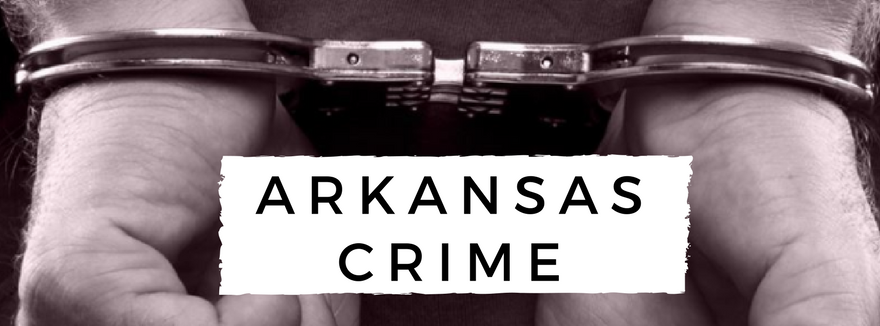The driver accused of drunkenly causing an October 2012 car crash that killed a 60-year-old Little Rock grandmother told authorities that he never left his traffic lane, an account the police investigator called "impossible," a Pulaski County jury heard Wednesday.
Prosecutors contend Mack Louis Hinson III veered out of his lane and forced a pickup into the path of Narjis Meti, the collision killing her instantly. The 37-year-old defendant is charged with negligent homicide, a Class B felony that carries up to 20 years in prison.
Prosecutors Kelly Ward and Jill Kamps on Wednesday played Hinson's 15-minute recorded interview for the nine women and three men hearing evidence before Circuit Judge Barry Sims.
Meti was killed on her drive home while on Cantrell Road after visiting a daughter and two grandsons in Maumelle. A three-quarter-ton Dodge 2500 pickup crossed into oncoming traffic near the Sam Peck Road intersection and hit her almost directly in the driver's seat of her 2005 Mazda 6.
Police maintain that Hinson, behind the wheel of a brand-new Toyota Prius, was speeding with a blood-alcohol level 50 percent higher than the state's legal limit of 0.08 when he drove onto the outside curb.
Investigators say Hinson reacted to hitting the curb by steering into the next lane over, where his car pushed the pickup into oncoming traffic where Meti was driving.
Hinson's lawyers maintain that the pickup driver, 42-year-old Chad Mitchell of North Little Rock, was the one who lost control after he twice clipped Hinson's 2012 Toyota then broke the tie rod in his truck's left front wheel, which caused him to drive into the woman's path.
In Hinson's interview with police, conducted eight days after the fatal crash, he said he was on his way home after returning some equipment to his parents on Isbell Lane when the crash occurred.
Hinson said he was driving no faster than the 45 mph speed limit but likely slower when a pickup suddenly drove up behind him. The truck hit the rear driver's side of his Prius, Hinson said on the recording, then clipped the front of the car.
Asked directly by vehicular-homicide investigator Ralph Breshears whether the Prius ever struck the curb or forced the truck out of its lane, Hinson said nothing like that happened because his car never left his traffic lane.
"I was amazed by the fact that after I was struck ... I was still able to maintain control of the vehicle," the defendant told the investigator. "I believe I stayed in my lane the whole time. It's such a small car that I was amazed that I was able to stay in that lane."
Hinson told the investigator he had consumed two 12-ounce rum punches about seven hours before the collision but that he had also done yard work and eaten two meals afterward.
"Impossible" was how Breshears described Hinson's version of events to jurors. Breshears testified he could not find physical evidence when he conducted his crash reconstruction to substantiate the defense's account of what caused the crash.
"There was no such evidence. I looked," Breshears told jurors. "That's a fact. It's not my opinion."
Skid marks, gouges in the road, scuff marks on the curb and damage to both the pickup and Prius show that the defendant started the collision chain that ended with the woman's death, he said. Breshears testified that the car's "black box" showed the Prius was driving at 69 mph when it scraped the curb before braking down to 45 mph after pushing the truck into oncoming traffic.
On cross-examination by defense attorney David Cannon, Breshears stuck to his guns on the findings of his two-month investigation. The officer said he disregarded witness accounts that the pickup and Prius had been driving the same speed side by side because he could not find physical evidence to support that contention.
Breshears also wouldn't back away from his findings that a broken tie rod at the left tire, a critical steering component, played no role in the crash. A broken rod would have acted more like an anchor and turned the truck so sharply toward oncoming traffic that it likely would have missed Meti, the officer testified. The pickup was "never" in Hinson's lane like the defendant told police, Breshears said, adding he could find no physical evidence to support Hinson's story.
Breshears said he saw no indication that Hinson had been drinking the night of the crash, testifying he didn't smell alcohol on Hinson or see him display any sign that he might be drunk, such as slurred speech or difficulty walking.
Pressed by Cannon to explain why he didn't conduct any field sobriety tests the night of the crash, Breshears said he was satisfied with the blood sample collected at the scene. He said he also didn't ask for physical tests because Hinson had just been in a car crash that could have impaired his balance, causing a false-positive on the tests.
The trial has exceeded its two-day schedule, so the judge has set the third day of proceedings to begin at 9 a.m. Tuesday. Prosecutors are expected to rest their case, with the defense offering testimony from its crash-reconstruction expert.
Metro on 12/11/2014

